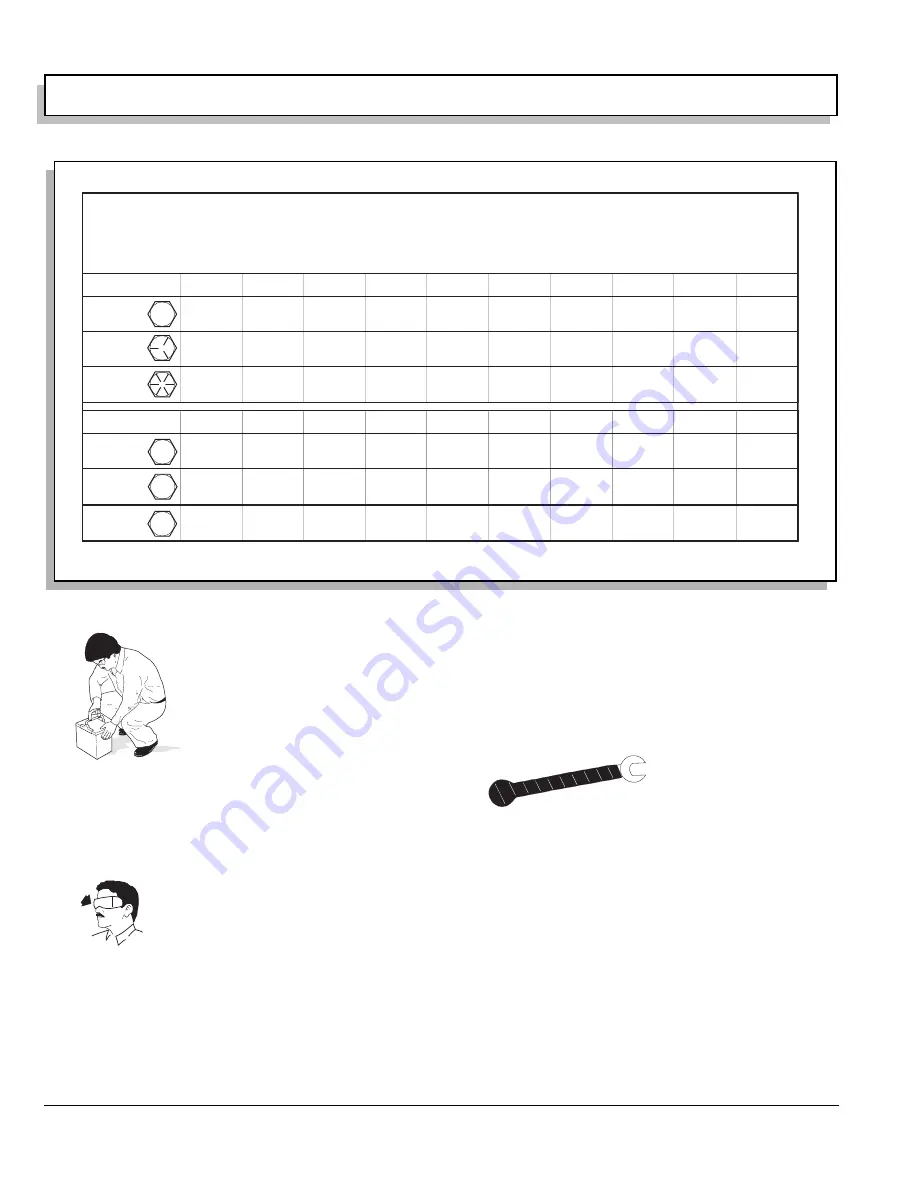
OPERATION AND SERVICE INFORMATION
Page 20
Owner’s Manual and Service Guide
Read all of manual to become thoroughly familiar with this vehicle. Pay particular attention to all Notes, Cautions and Warnings
Batteries are heavy. Use proper
lifting techniques when moving
them. Always lift the battery with
a commercially available battery
lifting device. Do not tip batteries
when removing or installing
them; spilled electrolyte can
cause burns and damage.
The electrolyte in a storage battery is an acid
solution which can cause severe burns to the skin
and eyes. Treat all electrolyte spills to the body
and eyes with extended flushing with clear water.
Contact a physician immediately.
Always wear a safety shield or
approved safety goggles when add-
ing water or charging batteries.
Any electrolyte spills should be neutralized with a
solution of 1/4 cup (60 ml) sodium bicarbonate
(baking soda) dissolved in 1 1/2 gallons (6 liters)
of water and flushed with water.
Overfilling batteries may result in electrolyte
being expelled from the battery during the charge
cycle. Expelled electrolyte may cause damage to
the vehicle and storage facility.
Aerosol containers of battery terminal protectant
must be used with extreme care. Insulate metal
container to prevent can from contacting battery
terminals which could result in an explosion.
W r a p w r e n c h e s w i t h
vinyl tape to prevent the
possibility of a dropped
wrench from ‘shorting
out’ a battery, which could result in an explosion
and severe personal injury or death.
BATTERY
A battery is defined as two dissimilar metals immersed in
an acid. If the acid is absent or if the metals are not dis-
similar, a battery has not been created. The batteries
most commonly used in these vehicles are lead acid.
A battery does not store electricity, but is able to produce
electricity as the result of a chemical reaction which
releases stored chemical energy in the form of electrical
energy. The chemical reaction takes place faster in warm
conditions and slower in cold conditions. Temperature is
important when conducting tests on a battery and test
Fig. 26 Torque Specifications and Bolt Grades
ALL TORQUE FIGURES ARE IN FT. LBS. (Nm)
BOLT SIZE
Grade 2
1/4"
5/16"
3/8"
7/16"
1/2"
9/16"
5/8"
3/4"
7/8"
1"
Unless otherwise noted in text, tighten all hardware in accordance with this chart.
This chart specifies 'lubricated' torque figures. Fasteners that are plated or lubricated when
installed are considered 'wet' and require approximately 80% of the torque required for 'dry' fasteners.
4
(5)
8
(11)
15
(20)
24
(33)
35
(47)
55
(75)
75
(102)
130
(176)
125
(169)
190
(258)
Grade 5
Grade 8
6
(8)
13
(18)
23
(31)
35
(47)
55
(75)
80
(108)
110
(149)
200
(271)
320
(434)
480
(651)
6
(8)
18
(24)
35
(47)
55
(75)
80
(108)
110
(149)
170
(230)
280
(380)
460
(624)
680
(922)
BOLT SIZE
Class 5.8
(Grade 2)
M4
M5
M6
M8
M10
M12
M14
1
(2)
2
(3)
4
(6)
10
(14)
20
(27)
35
(47)
55
(76.4)
Class 8.8
(Grade 5)
2
(3)
4
(6)
7
(10)
18
(24)
35
(47)
61
(83)
97
(131)
Class 10.9
(Grade 8)
3
(4)
6
(8)
10
(14)
25
(34)
49
(66)
86
(117)
136
(184)
5.8
8.8
10.9
Ref Tsp 1
Summary of Contents for Hauler 1000
Page 1: ...ELECTRIC POWERED UTILITY VEHICLES ISSUED APRIL 2005 OWNER S MANUAL AND SERVICE GUIDE 28805 G01...
Page 8: ...Page vi TABLE OF CONTENTS Owner s Manual and Service Guide...
Page 12: ...Owner s Manual and Service Guide SAFETY INFORMATION Page x Notes...
Page 43: ...Page 27 GENERAL SPECIFICATIONS Owner s Manual and Service Guide GENERAL SPECIFICATIONS...
Page 48: ...Page 32 Owner s Manual and Service Guide GENERAL SPECIFICATIONS Notes...
Page 49: ...Page 33 Owner s Manual and Service Guide WARRANTY LIMITED WARRANTIES...
Page 52: ...Page 36 Owner s Manual and Service Guide WARRANTY Notes...
Page 54: ...Page 38 Owner s Manual and Service Guide DECLARATION OF CONFORMITY...
Page 56: ...Page 40 Owner s Manual and Service Guide DECLARATION OF CONFORMITY Notes...
Page 57: ...Appendix A 1 LABELS AND PICTOGRAMS Owner s Manual and Service Guide LABELS AND PICTOGRAMS...
















































